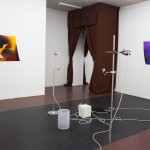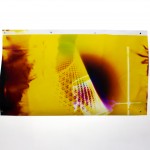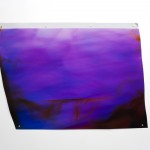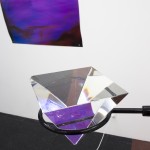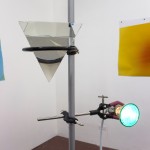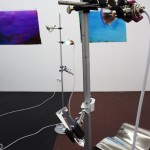Public Performance with Meg Clixby - Wednesday, September 6, at 8 pm
Opening Reception - Friday, September 8, 6 - 9 pm

The visual representation of electricity, known as a Lichtenberg figure, is created when the rushing electrons of an electric current is discharged onto photo paper, leaving a treeing pattern directly on the surface. If lighting strikes a person, these same tracks sometimes appear on the skin of the victim. The photographic paper acts more like a human skin than a human eye while playing the role of a passive registration instrument, similar to a tidal gauge.
Ocean waves diffract around jetties and sandbars, sound waves can diffract around objects, and light waves become diffracted when they pass through a narrow slit or an aperture. Water waves strike a barrier and reflect, much as light is reflected from a mirror. Like light, these waves leave the reflected surface at an angle from which they approached it. The transverse wave theory based on diffraction and polarization experiments proposes that light waves interfere with each other like sound and water waves, and that different colors are caused by different wavelengths.
In her highly immersive, sensory performances, Tatiana Kronberg combines photography, sculpture, and music in a ritual that examines the physical and metaphysical properties of light and sound waves. For her solo project at ADDS DONNA, she will transform the gallery space into both a camera and a darkroom. During a public performance, (Wednesday, Sept. 6th at 8pm) Kronberg and her collaborator Meg Clixby will expose photo paper in the gallery directly with flashes of light that will be bent, polarized, diffracted, and refracted by mirrors, prisms, obstacles, slits, and apertures in a series of collaborative experiments. The accompanying electronic score will likewise engage with the principles of reflection, diffraction, and absorption—only through sound instead of light.
Kronberg presents the darkened chamber of the performance space as a metaphor for the unconscious brain activity driven by the continuous flow of electrochemical waves, similar to how light waves create a latent image on the chemically treated surface in photo processing. Through repetition, the learned movements and thoughts become automatic in response to specific triggers, like the muscle memory of a surfer’s movements gliding on the surface of a rolling wave.
The resulting photograms on display for the remainder of the exhibition will serve as physical evidence of the live performance. By bypassing the negative and printing stages necessary to representational photo production, Kronberg eschews accurate documentation and consequent mediation of image-making in favor of the physically direct impression of the photogram.
This project was made possible with the generous assistance of Columbia College.
Jetties, excerpt of live performance with Tatiana Kronberg and Meg Clixby, September 6, 2017
